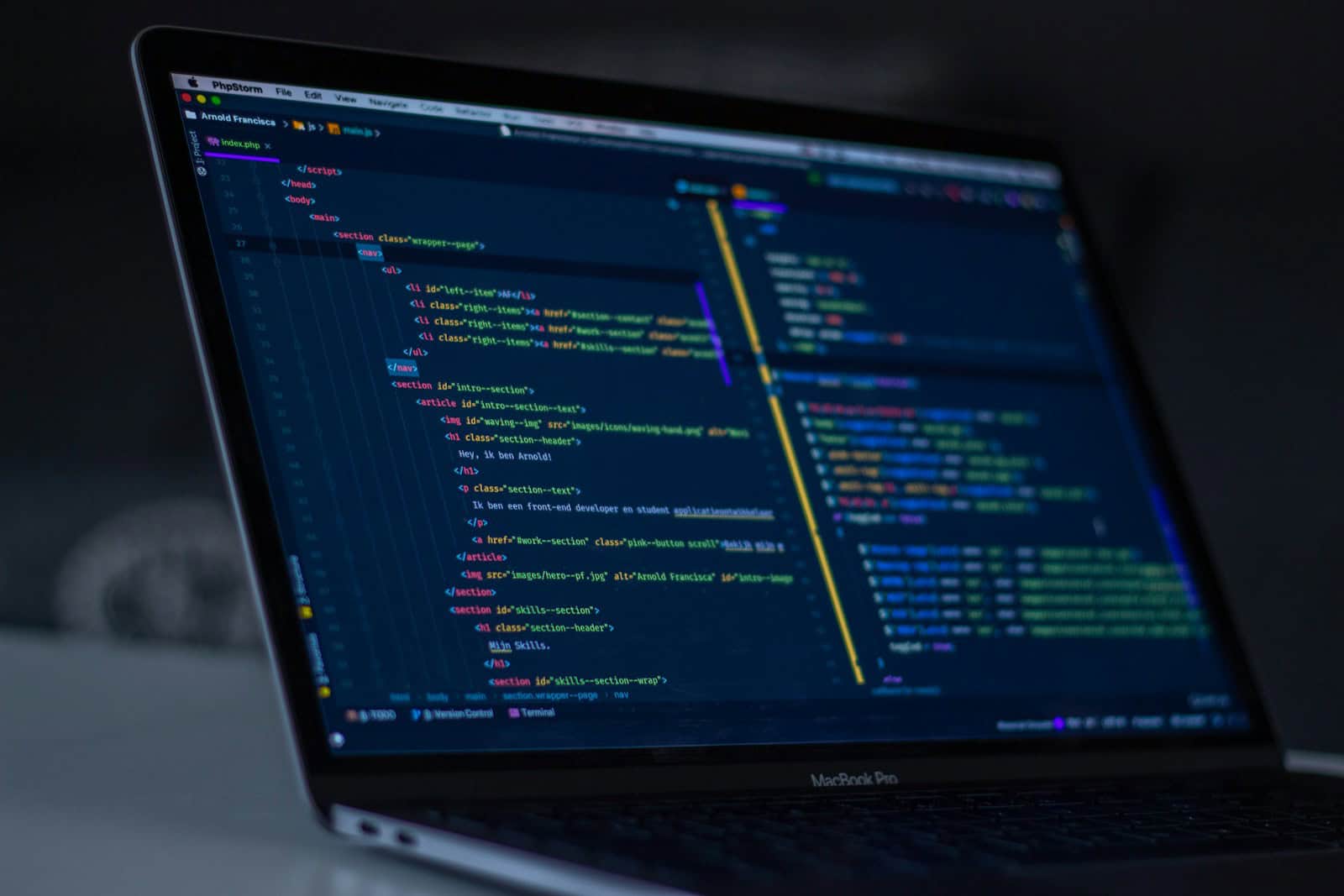Imagine telling your computer what you want in regular language, and it just builds it for you. That’s the essence of vibe coding. Vibe coding is a programming approach where you describe a problem in a few sentences to an AI tool, which then generates the code needed to solve it. You don’t need to know the technical details or syntax of programming languages – you just need to communicate your vision.
This new way of creating software has gained popularity because it lowers the barrier to entry for non-programmers. Instead of spending years learning to code, people can now bring their ideas to life by simply explaining what they want. The AI does the heavy lifting, translating your description into functional code while you focus on the creative aspects.
Some critics worry about the quality of the code produced, comparing it to “paying your drunk uncle who knows a thing or two about racing to build a race car kit for you,” as one Reddit user colorfully described. But others see it as a revolution that will change how we interact with technology, letting people converse with tools rather than learn complex programming languages.
How Vibe Coding Works
At its core, vibe coding is all about creating a flow—matching the energy of your coding session with your tools, music, environment, and mindset. It’s not just about writing lines of code, it’s about feeling your way through the build, treating programming more like a creative jam session than a mechanical task. Think of it like the coding version of getting in the zone: less about rigid structure, more about intuitive progress.
Vibe coding isn’t a formal methodology like Agile or Waterfall. Instead, it’s a loose style that prioritizes:
- Emotional state and mental clarity
- Environmental setup (music, lighting, desk arrangement)
- Tools and themes that enhance aesthetic and comfort
- Iterative, curiosity-driven development
- Real-time experimentation and creative coding
It’s coding that feels good—where the process matters as much as the result.
The Ingredients of a Good Vibe Coding Session
Here are some elements people often incorporate into their vibe coding flow:
| Element | Description |
|---|---|
| Music | Lo-fi beats, synthwave, jazz, or ambient to support focus and rhythm. |
| Lighting | LEDs, warm lamps, or natural light that matches your preferred mood. |
| Editor Theme | Dark mode with custom color schemes like Dracula, SynthWave ’84, or Tokyo Night. |
| Hardware | A satisfying keyboard, mouse, or even an ergonomic setup to reduce friction. |
| Scent or Airflow | Incense, a candle, or just a window open for fresh air—anything that elevates mood. |
The point is to curate your space so coding becomes immersive, almost meditative.
Tools That Support Vibe Coding
While you can vibe code in any IDE or language, some tools lend themselves better to the experience:
- Visual Studio Code – Lightweight, theme-heavy, customizable
- Replit / Glitch – For real-time collaboration or quick prototyping
- p5.js – Great for creative coding and visual feedback
- Processing – Designed for generative art and audio-visual projects
- Zed – A minimal, blazing-fast code editor with a distraction-free design
These environments help you stay in flow without too much mental overhead.
Common Projects You’ll See in Vibe Coding
Vibe coders often gravitate toward expressive, visually rewarding, or even just silly projects:
- Generative art with random color palettes
- Audio visualizers that react to music
- Custom start pages or dashboards
- CLI tools with a playful twist
- Personal websites with animated flair
- Interactive experiments using canvas or WebGL
The key here is expression. It’s less about shipping a commercial product and more about exploring the “what if?”
Vibe Coding vs Traditional Coding
| Aspect | Vibe Coding | Traditional Coding |
|---|---|---|
| Goal | Creative flow and personal satisfaction | Functionality, structure, deployment |
| Approach | Exploratory and intuitive | Logical and planned |
| Environment | Customized for mood and inspiration | Typically standardized |
| Output | Art, tools, experiments | Apps, systems, services |
| Time Constraints | Flexible and open-ended | Often deadline-driven |
That said, the two aren’t mutually exclusive. Many developers switch between them, using vibe coding as a mental refresh or side project outlet.
The Psychology Behind Vibe Coding
There’s a growing interest in how emotional and sensory input affects productivity and creativity. Vibe coding taps into:
- Flow State Psychology – Deep focus where time feels irrelevant
- Ambient Influence – External stimuli that boost cognitive ease
- Visual-Auditory Sync – Music and visuals aligning with brain rhythms
- Intrinsic Motivation – The joy of building something just because
For many, this isn’t a gimmick—it’s a legitimate way to enhance problem-solving, reduce burnout, and reframe how they approach coding.
How to Start Vibe Coding
If you want to give vibe coding a try, here’s a simple step-by-step way to ease in:
- Pick a playful or visual project – No pressure to finish, just explore.
- Set the mood – Choose your favorite playlist and adjust lighting.
- Customize your tools – Change your editor theme and fonts.
- Clear distractions – Mute notifications, full-screen your editor.
- Follow your curiosity – Build weird, fun, or beautiful things.
- Don’t overthink it – This is about process, not perfection.
Eventually, vibe coding becomes more of a mindset than a setup.
Key Takeaways
- Vibe coding lets anyone create software by describing their needs to AI without knowing programming languages.
- The quality of AI-generated code varies, making it better for simple projects than complex systems.
- This approach is changing who can build technology by focusing on ideas rather than technical skills.
Understanding Vibe Coding
Vibe coding represents a shift in how software is created, using conversational interfaces with AI to transform natural language descriptions into functional code. This emerging approach is changing developer workflows and creating new possibilities for both experienced programmers and newcomers.
Definition and Core Concepts
Vibe coding is a programming paradigm dependent on artificial intelligence where people describe problems in plain language and AI generates the corresponding code. Rather than writing code manually, developers “converse” with AI tools to create software.
The process typically involves:
- Describing intentions to an AI in natural language
- Refining outputs through iterative prompting
- Reviewing and editing AI-generated code
This approach allows programmers to focus on high-level concepts instead of syntax details. The term “vibe” refers to the intuitive nature of the interaction—developers communicate the “feel” or purpose of what they want built.
With vibe coding, engineers simply converse with the tool, letting AI handle implementation details. This makes programming more accessible to those without extensive coding backgrounds.
How Vibe Coding Differs from Traditional Programming
Traditional programming requires developers to write code line-by-line using specific syntax and structures. Vibe coding flips this model by prioritizing the problem description over manual implementation.
Key differences include:
| Traditional Programming | Vibe Coding |
|---|---|
| Manual code writing | AI-generated code |
| Syntax-focused | Intent-focused |
| Technical expertise required | More accessible to beginners |
| Direct control over implementation | Guidance through prompting |
Vibe coding shifts a programmer’s role toward prompt engineering and code review. Developers spend less time typing actual code and more time crafting effective prompts and reviewing AI output.
Programmers might spend time understanding code 2 hours after AI has implemented it, reversing traditional workflows where understanding precedes implementation.
Key Technologies and Tools in Vibe Coding
Several AI-powered tools enable vibe coding practices:
LLM-based Code Assistants:
- GitHub Copilot: Integrates with popular IDEs to suggest code as you type
- Cursor: Specialized IDE built around AI code generation
- Claude and ChatGPT: General-purpose AI models with strong coding capabilities
These tools are powered by large language models (LLMs) like GPT-4 and Claude 3.7 Sonnet that have been trained on vast repositories of code.
Effective vibe coding environments typically feature:
- Real-time code suggestions
- Natural language processing capabilities
- Integration with existing development tools
- Code explanation features
Modern IDEs increasingly incorporate these AI features, allowing developers to describe programs in plain language and receive functional implementations. This technology continues to evolve rapidly, improving code quality and expanding capabilities.
Applications and Impact of Vibe Coding
Vibe coding is transforming the software development landscape through innovative collaboration methods, streamlined workflows, and AI-powered assistance. This approach is creating new possibilities for both experienced developers and those with limited coding knowledge.
Collaboration Tools and Social Coding
Vibe coding thrives in collaborative environments where developers share and build upon each other’s work. Platforms like GitHub support this through features that allow real-time collaboration and version control. Teams can work together regardless of location, sharing code snippets and ideas instantly.
Social coding aspects have become central to the vibe coding movement. Developers connect through:
- Code sharing platforms
- Community forums
- Live coding sessions
- Pair programming tools
These connections help spread coding techniques and best practices. JavaScript and TypeScript communities have particularly embraced vibe coding principles, with developers creating shared libraries of reusable components.
API keys enable secure access to shared resources, while maintaining proper permissions. This balance of openness and security is crucial for successful collaborative projects.
Integrating Vibe Coding in Software Development
Companies are incorporating AI-powered development environments into their workflows. These tools suggest code improvements and help developers work more efficiently. They’re especially valuable for creating prototypes and proofs of concept quickly.
Key integration points include:
| Development Stage | Vibe Coding Application |
|---|---|
| Planning | AI-assisted requirement analysis |
| Design | Automated wireframing and mockups |
| Coding | Real-time suggestions and error detection |
| Testing | Automated test generation |
For languages like Java and HTML, vibe coding tools can generate boilerplate code and suggest optimizations. Unity developers use these tools to streamline game development processes across multiple devices.
This integration reduces development time while maintaining quality standards. Teams can focus on creative problem-solving rather than repetitive coding tasks.
Emerging Trends and Future Directions
AI tools are evolving rapidly, with improvements in natural language understanding being particularly important for vibe coding. Systems like Whisper are improving voice-to-code capabilities, making programming more accessible.
Security concerns are growing as vibe coding becomes more popular. New risks emerge when AI generates code that humans might not fully review. Developers are creating tools to automatically check AI-generated code for vulnerabilities.
The SaaS model is becoming dominant for vibe coding tools. This approach offers:
- Regular updates with new features
- Scalable resources for projects of any size
- Cross-platform compatibility
Exponential improvements in AI capabilities suggest that future vibe coding tools will understand context better and produce more sophisticated code. Programming languages themselves may evolve to better accommodate this human-AI partnership.
Frequently Asked Questions
Vibe coding represents a shift in how developers interact with code, using natural language to guide AI tools in writing programs. This approach changes the developer’s role from writing every line to focusing on high-level direction and review.
What are the primary principles behind vibe coding?
Vibe coding centers on describing what you want to build using everyday language instead of precise syntax. The main principle is communication with AI tools through natural language prompts rather than traditional programming.
It shifts the developer’s focus from implementation details to conceptual thinking. You explain the desired outcome, and the AI handles the technical execution.
Another key principle is iteration. Vibe coding usually involves back-and-forth refinement as you clarify your intentions to the AI.
In which scenarios is vibe coding most effectively applied?
Vibe coding works best for prototyping and rapid application development. When ideas need quick implementation or testing, describing your vision to an AI can produce functional code faster than traditional methods.
It’s also effective for routine tasks that follow common patterns. AI tools can generate boilerplate code based on simple descriptions, saving time.
Beginners benefit from vibe coding when learning programming concepts. It lets them focus on understanding logic before mastering syntax details.
What resources are recommended for learning the fundamentals of vibe coding?
Online platforms like Replit offer tutorials and environments designed specifically for vibe coding practices. These provide interactive ways to experiment with prompting techniques.
Technical publications such as MIT Technology Review offer analysis of this emerging approach. Their articles explain both concepts and practical applications.
Developer communities on platforms like Stack Exchange and Reddit contain discussions about effective prompting strategies and best practices for vibe coding.
How does the Vibe app facilitate the process of vibe coding?
Vibe applications provide interfaces that make natural language programming more intuitive. They typically include conversational interfaces where developers can describe their intentions.
These tools offer real-time code generation based on descriptions. The developer can immediately see how their “vibes” translate into functional code.
Many vibe platforms include visualization features that help users understand the connection between their descriptions and the resulting code structure.
What distinguishes vibe coding from other programming methodologies?
Vibe coding fundamentally changes the developer’s role from implementing specific solutions to conversing with the tool about desired outcomes. Traditional programming requires detailed instructions while vibe coding focuses on intentions.
It represents a shift from “how to do something” to “what to achieve.” This contrasts with methodologies that emphasize precise control over implementation details.
Vibe coding also blurs the line between planning and implementation phases that are typically separate in other methodologies.
Can vibe coding be integrated into existing development workflows?
Many teams adopt a hybrid approach, using vibe coding for initial prototyping or generating boilerplate code. This integration allows for rapid development of first drafts that developers can then refine.
Version control systems can track both human-written and AI-generated code, making it possible to collaborate on projects that use vibe coding techniques.
Organizations typically establish guidelines for review and testing of AI-generated code. These ensure that vibe-coded solutions meet the same quality standards as traditionally developed software.







